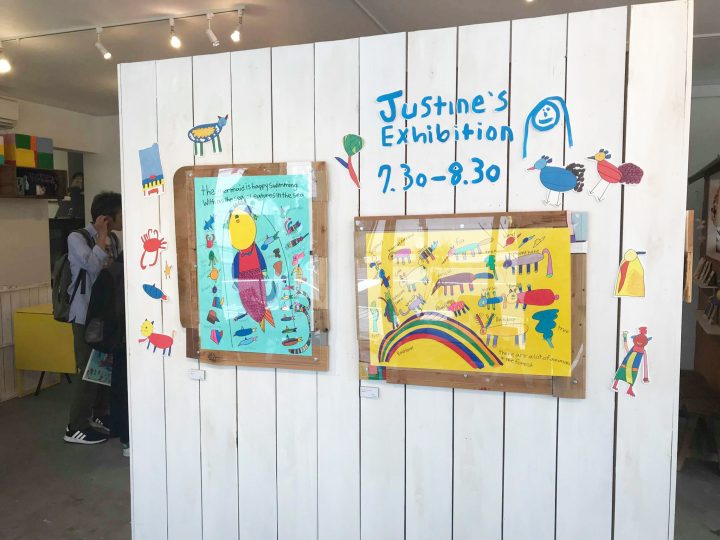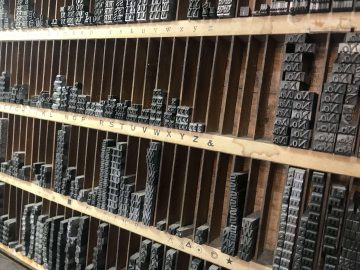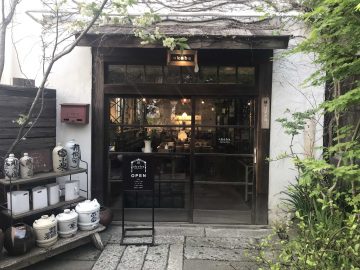People Landscape in KANAGAWA | Hayama Art Festival - Landscapes that connect people
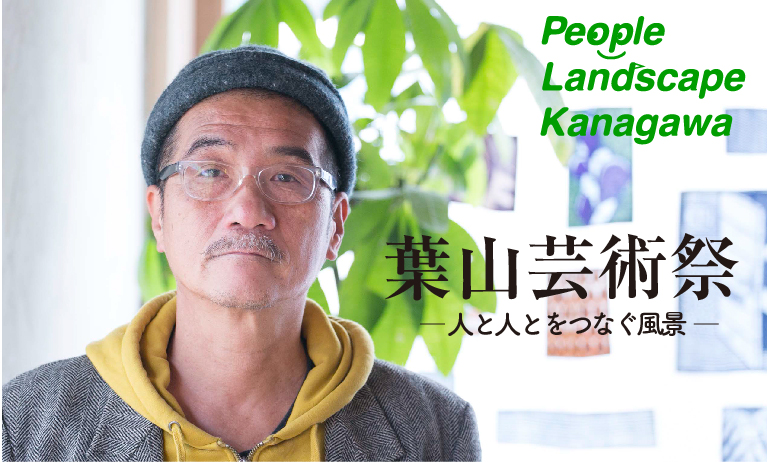
Interview & Text: Akiko Inoue Photo: Masamasa Nishino
Hayama Art Festival, which was founded in 1993 when art festivals were not as widespread in Japan as they are today, can be said to be the pioneer of art festivals in Japan. The area is surrounded by the sea and mountains, and the calm atmosphere created by the people who live there. The art festival is a place to meet people and get in touch with nature as you walk from store to store and house to house, greeting each other with "Hello! Good afternoon," while looking out at the sparkling sea from the bus window. It is also a place for We asked Masakazu Asayama, one of the organizers who has been involved with the festival for a long time, about how the Hayama Art Festival began and how it has continued until now. The location for the interview was ``Dining Room & Gallery Karabashi,'' which is right in front of the Morito Shrine bus stop.
■ The beginning of Hayama Art Festival
- First of all, how did the Hayama Art Festival begin?
Masakazu Asayama (hereinafter referred to as Asayama): Since then, there have been many people involved in art and culture in the town of Hayama, and when I wanted to see their works or go to a concert, I had to go to Tokyo or Yokohama. I had to have it. I think it all started with an honest desire to somehow experience this in my hometown.
- Mr. Asayama, you have been involved since the second time, but who is the initiator?
Asayama: At that time, there was a cultural promotion organization called Ichiyo-kai, and those people were at the center of it, and we started it with subsidies from the town. Many of the members of Ichiyo-kai were in their 60s, including school teachers and architects. It all started when these people started holding relatively academic art events.
- The first one was in 1993, so I think it was a time when art festivals weren't as common as they are now. Are there any projects that you used as reference?
Asayama: Nothing in particular. I think it's completely original.
I think the people of Yufuin were the first to start this kind of art festival. The ``Izu Kogen Art Festival'' was held in the same year as the Hayama Art Festival, and continues to this day. In the late 1990s, the Echigo-Tsumari Art Festival began. I think there is a big difference between Hayama and Echigo-Tsumari, where local people are doing things to promote the local culture, rather than being run by the government.

■The beginning of “Open House”
> *Open house = A style of opening your home to exhibits and presentations.
- So you started everything by yourself, starting with raising funds. I think that was extremely difficult. Did you also start the "Open House" that is synonymous with Hayama Art Festival from the first time?
Asayama: This is probably the fourth time the open house has been held.
- What was the trigger?
Asayama: It's a kind of trend, and we actually have no control over it.
There was a couple, Haruna and David, who were painters, and when they started saying, ``We don't have a place to exhibit in Hayama, so we'll exhibit it at home,'' they found it interesting and it spread. Since then, this style has become established at art festivals.
- I thought it was an idea that came from the management side. But I think it's precisely because of this bottom-up, flat relationship with no top or bottom that a variety of possibilities open up.
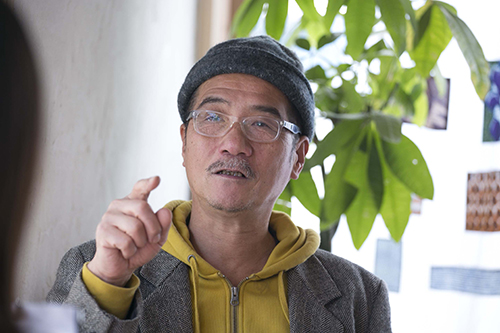
■ What Hayama Art Festival values - What you can see by looking at it for many years
- Please tell us about the concept and goals of Hayama Art Festival.
Asayama: It originally started with the idea of local production and local consumption of art and culture, so that local people could enjoy local art and culture, so of course that is the basis. The strongest concept is that ``locally produced and locally consumed art and culture can be used as a tool to communicate with each other.'' Initially, the concept was expressed using four English words: Nature / Education / Art conscious / Communication. As you can see from this, the natural environment of this area is also an important keyword.
- This year marks your 22nd year. Have you noticed any changes as you continue?
Asayama: Lately, there is a keyword that people outside of our company have been saying a lot, and we also think that it is a characteristic. It's a "regional connection." But I think this is true not only in Hayama but all over Japan.
- Even when I look at the website, I can clearly see that this is an art festival created by the participants. There are connections and relationships of trust between people, and I feel like this is teamwork because we have cultivated these relationships for over 20 years. Mr. Asayama, what motivates you to continue the Hayama Art Festival?
Asayama: The place where everyone gathers for the Hayama Art Festival is often Moriyama Shrine, and by continuing to hold the art festival, we are able to strongly support the community of Moriyama Shrine, and the environment of Moriyama Shrine We believe that being involved in the preservation of art festivals, and the fact that the people who gather here are established based on the connections made through the art festival, are our assets. For example, by helping us, we were able to prevent overdevelopment of this land, and people started to gather at this cafe, which is our regular base, and the community is being brought to life in a positive way through the Hayama Art Festival. That's what I'm most proud of. I also enjoy the fact that the participants have different lives, and I get to be a part of them.
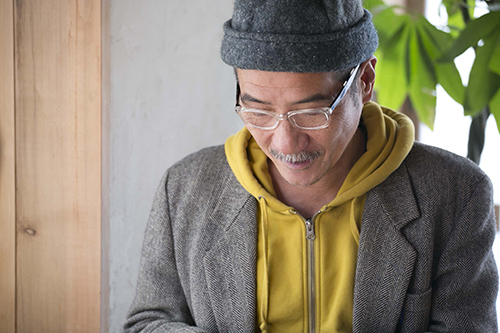
- So it means that there is meaning in continuing to do something.
Asayama: That's right. By continuing to do this, you will deepen your relationships with various people and organizations, and this may lead to various changes in both parties. It's not a sudden change, it's a slow change.
And by continuing to watch for many years, you can also see new movements happening in this area. For example, there are many villas and private residences that are famous architectural works, not only in Hayama but also in Kamakura and Oiso, but recently there has been a tendency for these to be destroyed due to problems such as inheritance. We can exchange opinions about what museums think about this, and what we, the art festival, think about it.
- It's very important that people you meet through art festivals can form relationships that allow them to discuss other local issues.
Asayama: That's right. Of course, the same goes for the art festival itself, but the things that are important to us are the things that are born through the art festival. At first glance, it may seem like a by-product, but I think supporting it is actually the most important thing.
■ Hayama Art Festival 2014

- Finally, please tell us about this year's Hayama Art Festival.
Asayama: As usual, approximately 125 participating organizations will present their works in various formats. In addition, a music event sponsored by the executive committee, which is held every year at the end of April, and an ``Blue Sky Art City'' with approximately 90 participating organizations will be held at Moriyama Shrine on the last Saturday of the art festival. *Official site link
- Whenever I visit the Hayama Art Festival, I always think of the best route to get around, but do you have any recommendations?
Asayama: We will be holding a guided tour in collaboration with the Museum of Modern Art on May 7th (Wednesday). In the morning, we look at the exhibitions at the museum, and in the afternoon we go around open houses around the museum, but we go through alleys in the Isshiki district that many outsiders don't know about, so you can enjoy the scenery as well. I think.
- It looks like a fun excursion! I am looking forward to the opening of the Hayama Art Festival.
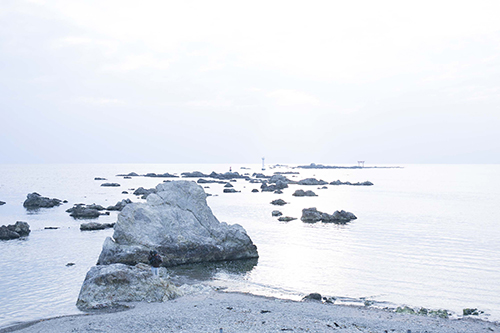
photo: View from Morito Shrine
(Editor's postscript)
Through this interview, I felt that the Hayama Art Festival is one of the essential festivals for the people of Hayama, just like local summer festivals and annual events. Even when people from outside come, they never refuse, and we can see that the organization is based on a relationship of trust that is built together, without any barriers, between the people who run it and the people who participate. In a society that emphasizes "connections," the quality of adhesive used to connect people is being questioned these days. However, I feel that it doesn't happen overnight, and that it is something that can be seen if you don't refuse to take your time.
Please come to Hayama in spring to experience the sustainable activities of the Hayama Art Festival, and to meet the people and nature who live there.
